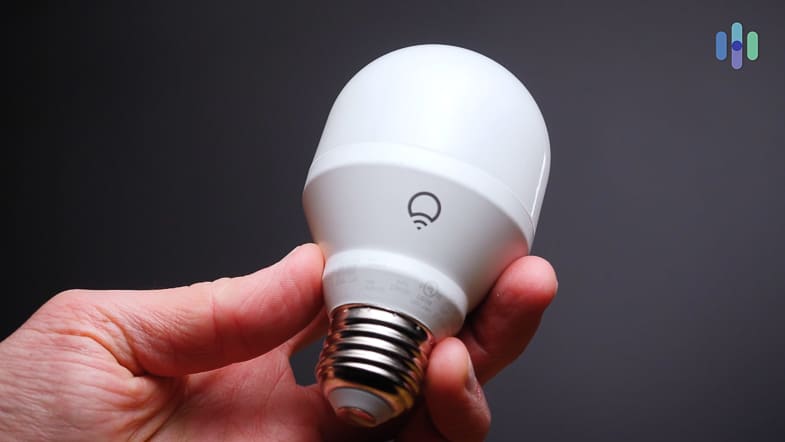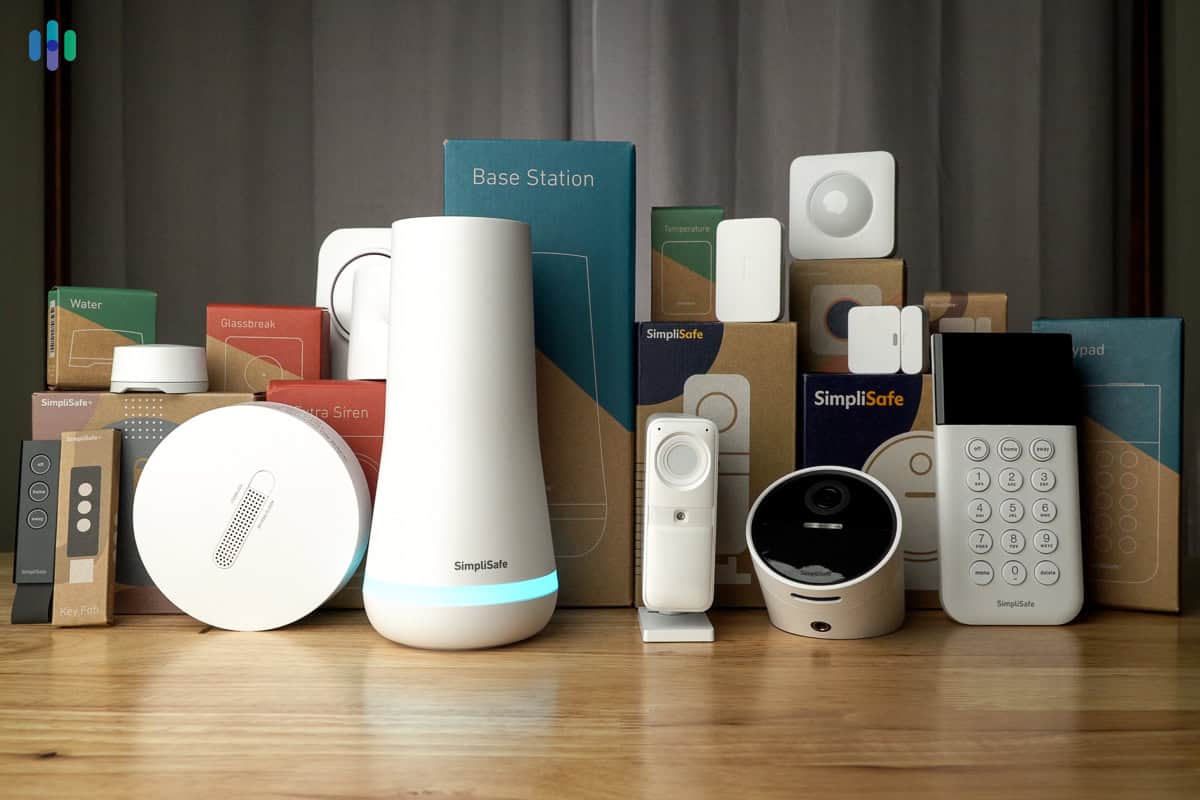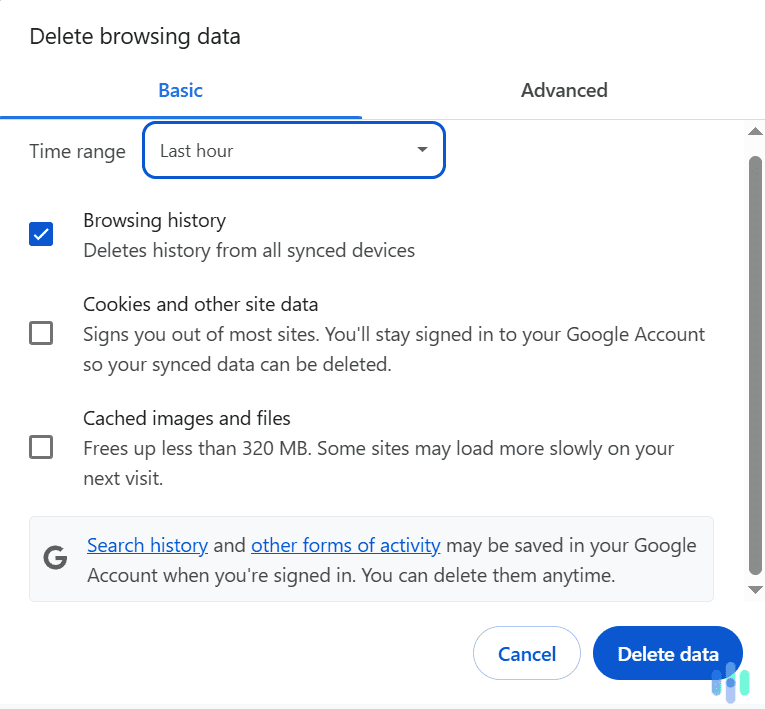There are several ways to smarten up your home’s lighting. You can buy smart bulbs for cheap and simply screw them into your existing fixtures. There are also smart plugs you can plug lamps into. If you’re looking for something more permanent, we highly recommend upgrading your switches to smart light switches.
Smart switches are the hardest to install, though. They require hardwiring, unlike the two other options. But don’t fret; you have smart home experts by your side. (That’s us!)
How Do I Install a Smart Light Switch?
- Before you install a smart light switch (or any light switch), it’s essential that you turn off the power to the switch located at the circuit breaker box.1
- If you are unsure which breaker switch connects to the light switch location, you may need to test a few. First, turn off any sensitive electronics.
- Keep the light at the switch location on and test breaker switches until it’s turned off.
- After you switch off the power on the circuit breaker, test the existing switch by toggling it on and off. It should not turn on.
- Remove your old switch.
- Unscrew and pull off the wall plate and switch; do not pull the wires apart.
- Use a voltage tester on the exposed black wire to be sure that the power is off.
- Identify the wires and add labels using electrical tape and sharpie if you’re concerned about mixing them up.
- For most smart switches, you will need each of the following wires: a black (lead) wire, a red or black load wire, a green or copper ground wire, and a white neutral wire (or a bundle of white wires).
- If your home is missing a neutral wire (common in houses built before the 1970s), or a ground wire, you’ll need to purchase a compatible smart switch.
- If you have any concerns about identifying your wires, it’s best to contact an electrician.
- Disconnect the wires from the old switch.
- Connect the wires to the new switch by matching each of the wires on your switch (which should be colored and/or labeled) with its partner on your wall.
- Twist together the switch wires and the wires in the wall, using wire nuts to secure them and trimming excess wire.
- Carefully, and as neatly as you can, place the wires back within the switch box.
- Secure the switch cover in place.
- Turn the power back on to test if the installation worked.
- Download the switch’s app and add your new switch to your account.
We have to admit that while smart switch installation is doable, it’s not something everyone can do (safely). We’re pro-DIY, but there’s no shame in asking for an electrician’s help, especially since you’d be dealing with live wires. Safety first!
How Do Smart Light Switches Work?
Smart light switches are wired to your home’s electrical system to control the flow of power to that switch. They are Wi-Fi enabled and connect to your home network, allowing you to control them with a smartphone app or a home assistant device.
You can also turn them on and off using a control panel or a switch on the wall, with or without a Wi-Fi connection. Thanks to their connectivity to phones and assistant devices, you can use them as part of a complete smart home setup.
The Benefits of Smart Light Switches
Smart light switches aren’t just cool tech; they offer plenty of benefits, such as:
- Home security: You can enhance your home’s security by turning lights on and off while you’re away, making it seem like you’re home when you’re not.
- No bulb replacements: Smart switches will work with your existing light fixtures and don’t require bulb replacements.
- Save money: You can save money on your electric bills by dimming lights and turning them off when you’re out of the house.
- Remote control: You can control your lights from anywhere with the internet, making them both convenient and highly accessible.
- Voice control: You can control your lights via voice assistants like Alexa and Google Assistant.
Smart Light Switch Features
Smart light switches vary significantly in terms of their features, so you should decide upfront what matters to you. Common options include:
- Control: The ability to control the switch with a wall panel, a smartphone app, and other voice assistant-compatible devices
- Scheduling: The ability to program schedules for lights to turn on and off automatically
- Scenes: The ability to program “scenes,” preset combinations of lights turned off and on
- Dimming: The ability to dim lights (requires the use of dimmable bulbs)
General Tips While Installing a Smart Switch
Installing a smart switch isn’t terribly complex, but it’s important to keep some basic tips in mind:
- If you aren’t comfortable with basic wiring or have any safety concerns, work with an electrician instead of installing the switch yourself.
- Find out whether your home has a neutral wire and a ground wire before you purchase a smart switch (you may need to unscrew a wall panel and pull it out partially to check). If you are missing either wire, make sure that the smart switch you purchase is compatible.
- Check whether you need a single-pole smart switch or a three-way smart switch. If a single switch controls the circuit, you’ll need a single-pole switch; if you have two switches in the room that controls the circuit, you’ll need a three-way switch. We’ll go into more detail further down.
- Be sure that you’ve turned off the power to the circuit before you touch any wiring. To be extra sure, use a voltage tester to ensure that no power is flowing to the wires.
- If you’re concerned about mixing up your wires, use electrical tape to mark which is which.
- Make sure you put the wires back into the switch box neatly to reduce fire hazards.
What’s the Difference Between a Smart Switch, a Smart Plug, and a Smart Bulb?
It’s hard to keep track of which smart devices do what, especially when their functions are similar. While smart switches, smart plugs, and smart bulbs can all be used as part of smart lighting systems, they have important differences.
Smart Switches
A smart switch controls the flow of power to a certain area, replacing a traditional wall switch. This means it will control whatever the traditional switch controlled, usually light fixtures. The switch connects to the internet, allowing you to control it remotely via an app or a voice assistant like Alexa.
Smart Plugs
A smart plug is an adapter that you plug into an existing wall plug. Then, you can plug a small electronic device into that adapter. You can control the plug via a smartphone app. Smart plugs work well to control lamps that are plugged in rather than hardwired, like those you might have on a side table.
Smart Bulbs
A smart bulb is an internet-enabled LED bulb. Common features include the ability to program schedules, turn lights on and off, dim them, and change their colors via a smartphone app or voice assistant. If you’re using a light fixture that has multiple bulbs, you’ll need to replace all of the existing bulbs with smart bulbs if you want to control the fixture remotely.
Why Choose Smart Switches?
Smart switches are the hardest to install, but going through all that trouble will let you reap benefits that you simply can’t from smart bulbs and plugs.
For one, a smart switch is more cost-efficient in the long run than a smart bulb. Smart bulbs are typically more expensive than regular LED bulbs. You can buy a decent LED bulb for less than $5 per piece, while a single smart bulb can cost up to $60. Cheaper ones cost $8 to $15. That would be fine if smart bulbs are one-and-done, but they do burn out like regular bulbs. That means in three to five years, you’d need to buy new smart bulbs again. With smart switches, you can use regular LED bulbs, which are cheaper.
Smart switches also allow you to use your light switches like regular. Consider this: For a smart bulb to work, you need to keep the light switch on. Turning the switch off will cut the power to the bulb and make remote control functions unavailable. The same is true for smart plugs. Even if you can control the flow of electricity that goes through the smart plug, you can’t control the switch of the lamp plugged into it. If someone turned off the physical switch, there’s nothing the smart plug can do. With a smart switch, whether the switch is physically on or off, you can always use your app or controller to turn your lights on and off.
Simply put, smart switches are more permanent than other smart lighting options.

What Do You Need to Install a Smart Light Switch
You don’t need a massive toolkit to install a smart light switch; only a few basic tools are necessities. These include:
- Screwdrivers (Philips head and/or flathead depending on your wall covers)
- Wire stripper and cutter
- Pliers
- Wire nuts
- Electrical tape
- Voltage tester pen (not required, but inexpensive and recommended for safety)2
How Do I Know if I Need a One-Pole Switch or a Three-Way Switch?
When you set out to buy a smart switch, you’ll need to choose between a one-pole switch and a three-way or four-way switch. But what’s the difference, and which one do you need?
Single-pole switches control power from one point in the wall, while three-way or four-way switches control power from multiple points.
It’s easy to tell which set-up you have in a certain room. If a single switch controls the power to a single light, you’ll need a single-pole switch. If two switches control the power to a single light, like two switches on opposite sides of a room, you’ll need a three-way switch. If three switches control it, you’ll need a four-way switch.3
The instructions in this article focus on installing a single-pole switch; if you have a multi-switch setup, you’ll need to replace the other switches on the circuit with companion switches from the same company, following the directions in the owner’s manual.
How Do You Choose a Smart Light Switch?
There are plenty of smart light switches on the market, and it can be hard to identify the differences. But there are a few key questions you should ask yourself to narrow down your options:
- Single vs. three-way switch: Do you need a single-pole switch or a three-way switch? Most companies sell both types of smart switches.
- Wire types: Do you have both a neutral wire and a ground wire in your home? If your house was built in the 1970s or earlier, double-check that you have a neutral wire before you choose a switch; many require a neutral wire. That being said, there are smart switches available that work without neutral wires from brands including Lutron, GE, and Inovelli; make sure it works with your home’s wires (or lack thereof) before you make any purchases.
- Smart home compatibility: Do you want the switches to be compatible with your existing smart home devices as well as voice assistants like Google Assistant or Alexa? Not all switches are compatible with all IoT devices. If you are already using other smart devices like smart home security systems, it makes sense to keep everything within the same ecosystem.
- Hub: Does the smart switch require a hub? Some brands route all smart switches through a centralized hub device.
- Dimming: Do you want a dimmer switch? Not all smart switches include this ability. It’s also important to note that you’ll need to use bulbs compatible with dimmers to use the feature.
- Mobile application: What are the app’s ratings like? Since the main selling point of a smart switch is controlling your lights with your phone, it’s important to have an effective app. Check the Google Play and Apple stores to get customer perspectives on how well the switch’s apps work.
- Pricing: What’s your budget? Smart switches generally range from $30 to $60 per switch, depending on features.
How Do You Connect a Smart Light Switch to Your Network?
The specific steps for connecting a smart light switch to your network will vary depending on the model you purchased, so always check your manual. Common steps include:
- Download the app that goes with your smart switch.
- Create an account.
- Ensure that your phone is connected to your Wi-Fi network.
- Add the switch to your app.
- Depending on the model, the switch may connect to your Wi-Fi automatically or require manual connection on your phone.
- Once you’re connected, check out the app’s settings and enable remote control if you would like to control the switch when you’re not home.4
Recap
Smart light switches offer increased control over your home from afar, as well as day-to-day convenience. However, choosing and setting up smart switches requires a careful assessment of your preferences and your home’s requirements. With some basic electrical work, you can take on smart switch installation yourself. Of course, calling an electrician is a great option for installing any type of switch.
FAQs
We know that installing a smart switch can sound daunting, especially if you aren’t experienced with wiring. That’s why we’ve rounded up answers to the questions we receive most often.
-
How do you wire a smart light switch?
Wiring a smart light switch is essentially the same as hardwiring any other switch. You will need to remove the existing switch and join the appropriate wire connections from your wall to the smart switch.
-
How do you install a three-way smart switch?
Installing a three-way smart switch is similar to installing a single-pole smart switch. The main difference is that you’ll use one additional wire, the traveler wire. Like with a single-pole smart switch, the wires from your wall will connect to the smart switch just as they connected to your existing switch.
-
Do I need an electrician to install a smart light switch?
No, you do not need an electrician to install a smart light switch. However, it does involve working with basic wiring, and if you are uncomfortable or inexperienced with electrical work, hiring an electrician may be advisable.
-
How much does it cost to install smart switches?
Installing a smart switch does not come with any costs if you’re comfortable with basic wiring. However, if you prefer to have an electrician install your switch, your costs will be comparable to the cost of installing a traditional switch. While prices will vary based on your area, you can expect to pay between $50 and $150 per smart switch installation.







